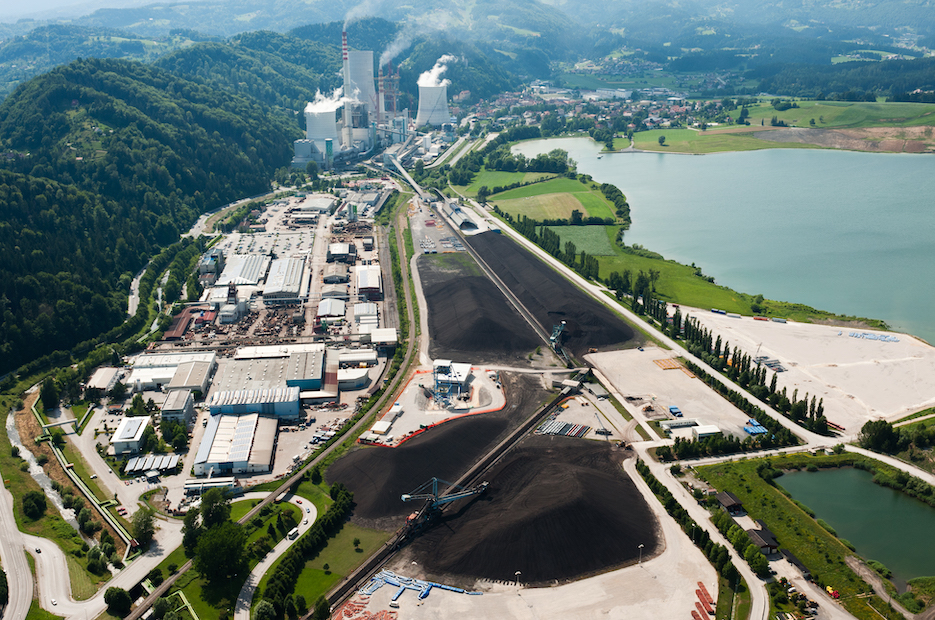Mine owners across Europe are looking at a new form of underground energy storage to offer a low carbon future as operations wind down. Active deep mine operators in Slovenia, Germany, The Czech Republic and Finland are all examining how underground gravity energy storage – provided by Edinburgh firm Gravitricity – could offer green opportunities to mining communities facing a downturn in employment.
Gravitricity has developed a unique energy storage system, known as GraviStore, which uses heavy weights – totalling up to 12,000 t – suspended in a deep shaft by cables attached to winches. It says this offers a viable alternative future to end of life mine shafts, which otherwise face costly infilling and mine decommissioning costs.
It has teamed up with energy multinational and winch specialist ABB alongside worldwide lifting specialists Huisman to commercialise the technology for mine operators. Gravitricity say its GraviStore system is ideally suited to recently decommissioned mines, where existing shafts and winches can be repurposed. Their technology is now generating interest among mine operators keen to find green alternatives to decommissioning.
Current projects include the Velenje underground lignite mine in the northeastern part of Slovenia, operated by Premogovnik Velenje; the Pyhäsalmi mine – Europe’s deepest zinc and copper mine – in northern Finland, owned by First Quantum Minerals; the Darkov coal mine in the Czech Republic, formerly operated by OKD; and the Grube Teutschenthal former potash and salt producing mine, in Germany, now owned by Geiger Group.
At Velenje, Gravitricity engineers have already visited the site to assess the technical feasibility of installing systems in two specific shafts – one of which is a ventilation shaft which may become available for a potential pilot project next year. Studies are also ongoing at the Pyhäsalmi, Darvok and Grube Teutschenthal mines, with potential to advance pilot projects in the near future.
Commenting on the projects, Gravitricity Founder and Executive Chairman Martin Wright said: “Gravity energy storage offers a powerful green opportunity to mine operators looking to extend a mine’s life beyond the extraction of materials. As well as being a genuine alternative to decommissioning, new underground energy storage schemes can provide economic and employment opportunities in communities where traditional jobs are in decline. Our work with mine operators is underlining the interest in our technology, and we are in dialogue with both mine owners and public sector organisations to turn these studies into operational plans.”
Gravitricity has already demonstrated its GraviStore technology with an above-ground 250 kW demonstrator, where the company successfully raised and lowered two 25 t weights to generate full power and verify the system’s speed of response. The £1 million, 12-m high test rig proved the system can go from zero to full power in less than a second – which can be extremely valuable in the frequency response and back-up power markets – plus its ability to continuously vary power output dependent on demand.
The GraviStore system uses heavy weights suspended in a deep shaft by cables attached to winches. When there is excess electricity, for example on a windy day, the weight is winched to the top of the shaft ready to generate power. This weight can then be released when required – in less than a second – and the winches become generators, producing either a large burst of electricity quickly, or releasing it more slowly depending on what is needed.
Gravitricity says its system offers many of the best characteristics of pumped storage hydro and lithium-ion batteries – but unlike batteries, the Gravitricity system can operate for decades without any reduction in performance. It adds that it has an expanding portfolio of intellectual property in underground energy storage including eight granted patents and a further two pending. The idea of using gravity to store energy is not new. Britain already relies on a number of pumped storage hydro schemes, such as Cruachan Power Station, where water is pumped uphill to be released when required.











